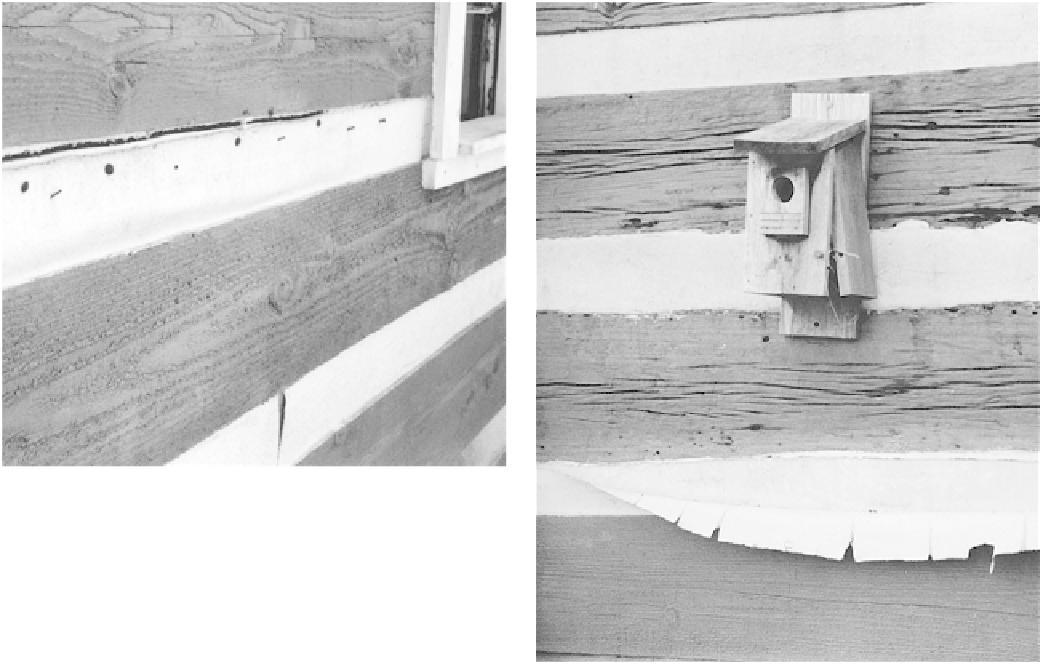Civil Engineering Reference
In-Depth Information
We were called in on a consultation for a cabin that had been chinked
with a plastic-based product seven years previously. These products
are installed in a
1
⁄
4
-inch-thin application over a backing board or foam
board stuffed into the chinking crack. In this case, the plastic mortar
had peeled off like a Band-Aid in dozens of places on the cabin, both
outside and in. We recommended that all the plastic mortar and back-
ing boards be removed and that the whole house be rechinked with
wire, mortar, and fiberglass.
several log houses a year that were done wrong —
some very recently. You see, if the mortar is flush at the
top, when the log shrinks it will open a crack that fun-
nels rainwater right into the space. When the log
expands, it pushes the chinking out farther. Some
water runs inside, some outside, and a lot of it just sits
there to rot the wood.
The plaster should be applied as dry as it can be eas-
ily worked, or it will shrink as it dries and cracks will
appear. But after it's on, it should be kept moist to
allow it to cure properly. In dry weather, I wait a cou-
ple of hours, then spray with a mist of water. In direct
summer sunlight, I cover it with plastic sheeting for a
couple of days, and lift the sheeting to spray it every
two hours with water while the sun remains on it.
Special problems can arise. Once we restored a pine
log house that got periodic southwest wind-driven
rain. The old wood absorbed water every possible way
— through checks and the tiny holes left by powder-
post beetles, and even under the edges of our sloped
chinking plaster. We finally had to caulk all the cracks
outside with clear caulk (none of the available colors
matched) and to paint the wood with a combination
of creosote, oil, and bleach oil to retain the gray color.
Since then I've always sloped the chinking in more at
the top on the weather sides of the house, and I've
always cut away any deteriorated, spongy wood that
can absorb water, leaving a sharp corner at the log's
bottom edge to tuck the chinking under.
At window and door facings and at corner notches,
I stuff thin cracks with fiberglass and use a mason's
pointing tool to push plaster in over it. Any applica-
tion of cement plaster should have metal reinforcing
in it, even if it's only a nail in a narrow crack. If the
crack is a half inch or less, use caulking.
As waterproofing, we apply two coats of the clear
exterior masonry sealer to the cement chinking as soon
as it's dry — about a week later. This stuff doesn't shine,
and soaks in quickly, so you can go right over the first
coat with the second.
Now, after a couple of months of winter heat in the
house, the moisture content will go down and the logs
will shrink even more. Then you'll notice a thin crack
opening at the top of the cement. Wait until this



